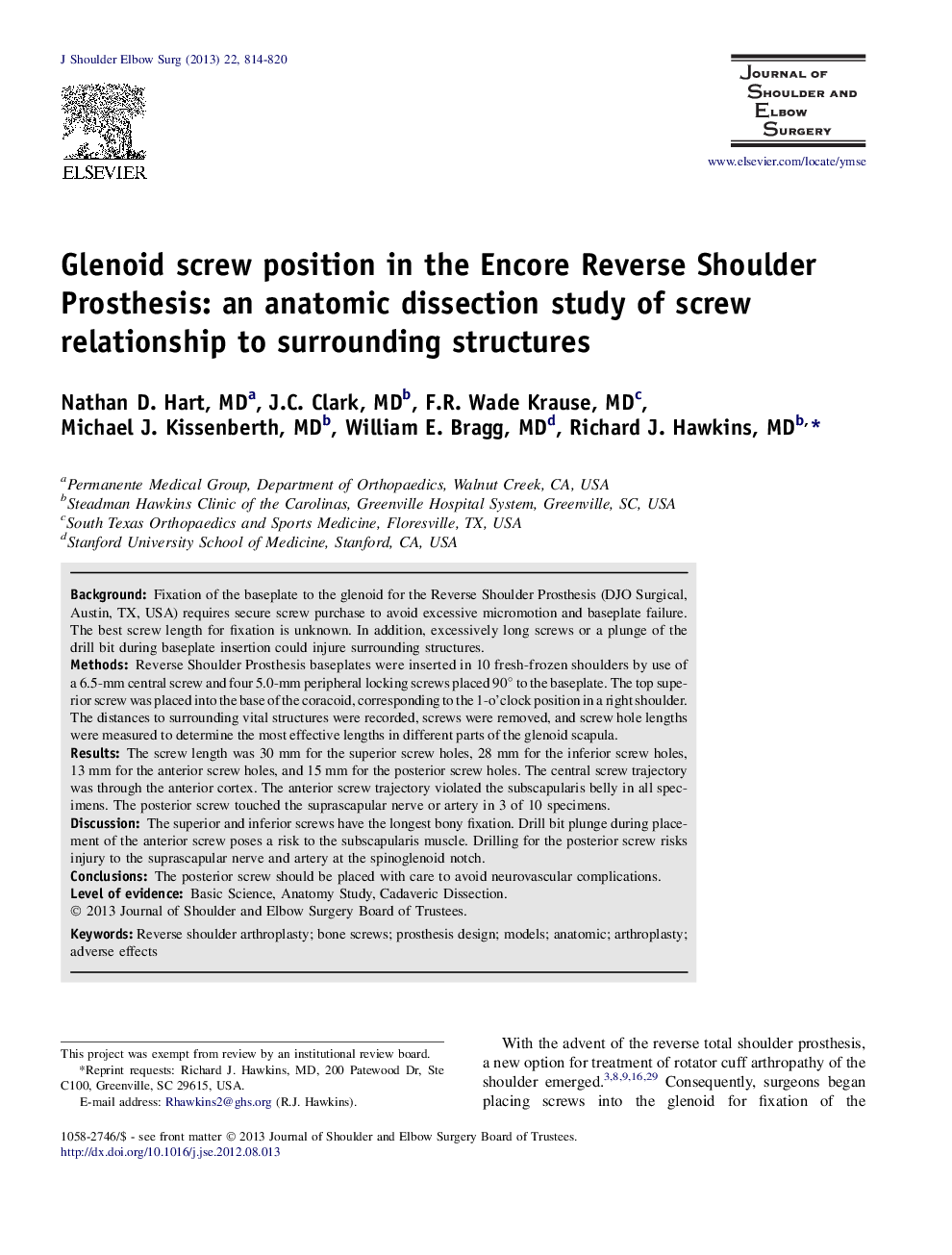| Article ID | Journal | Published Year | Pages | File Type |
|---|---|---|---|---|
| 4073740 | Journal of Shoulder and Elbow Surgery | 2013 | 7 Pages |
BackgroundFixation of the baseplate to the glenoid for the Reverse Shoulder Prosthesis (DJO Surgical, Austin, TX, USA) requires secure screw purchase to avoid excessive micromotion and baseplate failure. The best screw length for fixation is unknown. In addition, excessively long screws or a plunge of the drill bit during baseplate insertion could injure surrounding structures.MethodsReverse Shoulder Prosthesis baseplates were inserted in 10 fresh-frozen shoulders by use of a 6.5-mm central screw and four 5.0-mm peripheral locking screws placed 90° to the baseplate. The top superior screw was placed into the base of the coracoid, corresponding to the 1-o'clock position in a right shoulder. The distances to surrounding vital structures were recorded, screws were removed, and screw hole lengths were measured to determine the most effective lengths in different parts of the glenoid scapula.ResultsThe screw length was 30 mm for the superior screw holes, 28 mm for the inferior screw holes, 13 mm for the anterior screw holes, and 15 mm for the posterior screw holes. The central screw trajectory was through the anterior cortex. The anterior screw trajectory violated the subscapularis belly in all specimens. The posterior screw touched the suprascapular nerve or artery in 3 of 10 specimens.DiscussionThe superior and inferior screws have the longest bony fixation. Drill bit plunge during placement of the anterior screw poses a risk to the subscapularis muscle. Drilling for the posterior screw risks injury to the suprascapular nerve and artery at the spinoglenoid notch.ConclusionsThe posterior screw should be placed with care to avoid neurovascular complications.
